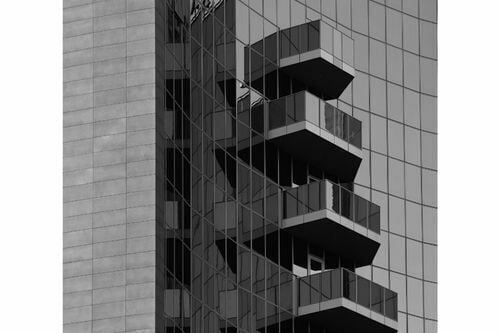Table of Contents
In the last century, architecture has dramatically changed. Going from traditional architecture, which was rich in aesthetic value, to modern architecture, which delivers the ideal balance of practicality and design.
‘’Less is more,’’ designer and architect Mies Van Der Rohe, rightfully sums up the modernist ethos and modern architecture. The demand for architecture that embodied the spirit of the new era emerged at the start of the twentieth century.
Several Western nations developed this brand-new contemporary architectural style in the ten years after World War I.
Evolution of modern architecture

Beginning at the turn of the 20th century, the modern architecture uses the rational application of contemporary building materials and technology, the principles of functionalist planning, and the rejection of adornment and precedent from the past.
Modern architecture was primarily made up of plain form with no decoration. Each floor plan was sensible and useful. Attention is the foundation of contemporary architecture, which is produced by lines, fundamental forms, and shapes.
Thus, simple and plain geometric forms, rectangular shapes, and linear features comprise the primary characteristics of modern architecture. The design of skyscrapers is where this modern aesthetic became most obvious.
The German architectural and art school Bauhaus had a significant influence on modern architecture.
Following the Industrial Revolution, new building techniques were created as a result of easy access to new modern building materials (1830–40). The most frequently utilized materials in modern construction were-
- Glass
- Steel
- Reinforced Concrete
A vast group of comparable structures that appeared in many nations during the 1920s and 1950s as a result of the work of many renowned modern architects are collectively referred to as modern architecture.
Le Corbusier in France, Ludwig Mies Van Der Rohe in Germany, and Walter Gropius in other parts of the world were well-known modern architects who started inventing new architectural solutions to blend conventional architecture with new technological advancements. This movement is frequently credited to Frank Lloyd Wright, Louis Sullivan, Oscar Niemeyer, Alvar Alto, and others as well.
European modernism was the birthplace of the style, which later influenced American design. In the 1980s, modern architecture remained the pre-eminent architectural style for corporate and institutional structures.
Advantages of modern architecture
- It enhances worker productivity while safeguarding the health of residents.
- It reduces waste, pollution, and damage to the environment.
- It offers a number of advantages and it makes the most of available natural light from the sun, whether through window walls, unusual locations, skylights, or expansive windows, which also includes
- Controlling circadian rhythms
- Awesome architecture and a breathtaking outlook
- Using passive solar heating to reduce your fuel costs
- Due to the cost-cutting measures taken by modern design, more people can now live in larger spaces.
- Modern architecture pushes the boundaries and offers you a distinctive, imaginative, lovely, practical, and useful solution.
12 important modern architecture styles

Here is a rundown of the main architectural movements that made up modernism.
It is the resource for understanding the evolution of 20th-century design and is equipped with illustrations of each style, demonstrating the Modernist practice that underpinned the theory.
Early century styles
Bauhaus
Walter Gropius established a German school of architecture and the arts in 1919, giving rise to the name The Bauhaus, which is derived from the German language for ‘Construction House.’
The institution not only served as a model for several architectural schools that came after it, but it also lent its name to a distinct architectural style that combined balanced forms with abstract shapes and placed a strong focus on function.
De Stijl
De Stijl, which is Dutch for ‘The Style,’ was established in 1917 and is thought to have peaked between 1917 and 1931.
The style characterization is done through the minimalism of design, the use of black, white, and primary colors, as well as the concision of horizontal and vertical elements.
Constructivism
Constructivism was born in the Soviet Union. It produced artistically abstract geometric masses by fusing technological innovation with Russian futurist inspiration.
El Lissitzky and Vladimir Tatlin are two well-known Russian constructivist architects, albeit both are best known for their concepts and unrealized projects.
Expressionism
In addition to inspiring odd massings and utopian aspirations, expressionism investigated new technical possibilities that resulted from the mass production of steel, masonry, and glass.
Mid-century styles
Functionalism
The foundation of functionalism is the idea that a building’s design should reflect its purpose and function. The style, which emerged in the years following World War I is linked to contemporary humanism and socialism.
Minimalism
The Bauhaus and De Stijl movements of the 1920s gave rise to minimalism, which emphasized the use of straightforward design components without any embellishment or decoration.
It was made popular by designers like Mies van der Rohe, who argued that stripping a design down to its most fundamental components shows its actual core. Pure geometric forms, simple materials, repetition, and clear lines are characteristics of the style.
International style
The International Style denotes the period when European Modernism spread across the globe, especially in the United States. It is an outgrowth of early Modernist concepts in Europe.
Monolithic skyscrapers with curtain walling, flat roofs, and ubiquitous glazing are the definition of the American adaptation of the design. It is characterized by plain geometry and a lack of decoration.
Metabolism
The post-war Japanese movement known as metabolism gave megastructures organic growth. By publishing their Metabolism manifesto in 1960, a group of young designers led by Kiyonori Kikutake, Kisho Kurokawa, and Fumihiko Maki was able to draw substantial public attention to the fashion, which was influenced by biological processes and Marxist beliefs. Modularity, prefabrication, adaptability, and solid core infrastructures are among the traits.
Brutalism
In the 1950s, British architects Alison and Peter Smithson invented the term ‘brutalism.’ The ‘Béton brut’ (raw concrete) that Le Corbusier is known for, popularised the style, which is distinguished by its monolithic forms, hard geometric patterns, and odd shapes.
Brutalist structures are often covered in rough, unfinished concrete, whether they are government structures, educational facilities, or high-rise residences.
Late century styles
Postmodernism
A philosophical shift that was equally comprehensive as the Modernism it wanted to replace, led to the creation of Postmodern architecture, which aimed to offer a more contextual approach to design and reconsider the fundamental modernist concepts.
High tech
High-tech architecture, also known as Structural Expressionism, was a late-modern aesthetic that combined building design with technology.
The style stressed transparency in design and construction, communicating the structure and function of the building through exposed features by utilizing new materials and technology.
Deconstructivism
It is a branch of postmodernism and is distinguished by a lack of harmony, continuity, or symmetry in structures.
Deconstructivism frequently modifies a structure’s exterior by forming non-rectilinear shapes that warp and displace parts, giving the impression of controlled chaos and unpredictability.
Key takeaways
There have been many developments in the field of architecture. It has gone from traditional to modern and delivers the ideal balance of practicality and design.
Modern architecture uses the rational application of contemporary building materials and technology, the principles of functionalist planning, and the rejection of adornment.
Modern architecture has evolved from a 20th-century design and is equipped with illustrations of each style, demonstrating the Modernist practice that underpinned the theory.
Did you find this blog informative? If so, please share your thoughts in the comments section below. Click here to contact us for more information on modern architecture. We would be happy to assist you with your queries.
Liked this blog? Read next: Top 10 architecture scholarships abroad
FAQs
Q1. What are the 3 modern architectural structures?
Ans- Modern Buildings-
- Villa Savoye (Le Corbusier, Paris, France, 1931)
- The Fallingwater House (Frank Lloyd Wright, Mill Run, Pennsylvania, USA, 1935)
- Glass House (Philip Johnson, New Canaan, Connecticut, USA, 1949)
- The Guggenheim Museum (Frank Lloyd Wright, New York, USA, 1959)
Q2. Who created modern architecture?
Ans- Frank Lloyd Wright, who was born in Richland Center, Wisconsin, in 1867, is regarded as the founder of modern architecture and the greatest American architect of all time. He is one of America’s most recognizable architects.
Q3. When was modern architecture most common?
Ans- Modernism continued to have an impact on vernacular design long into the late 20th century, even though the best examples of modern architecture in the United States are mainly from the early- and mid-20th centuries.







